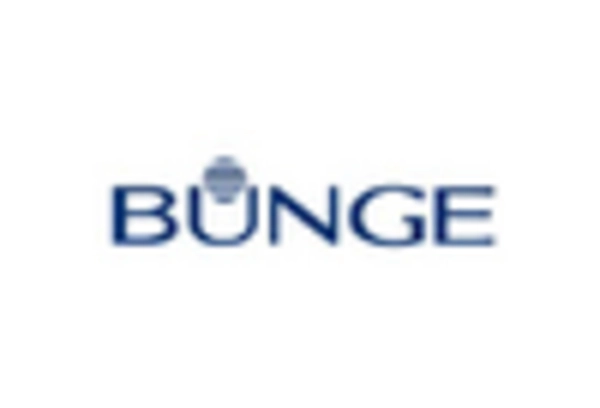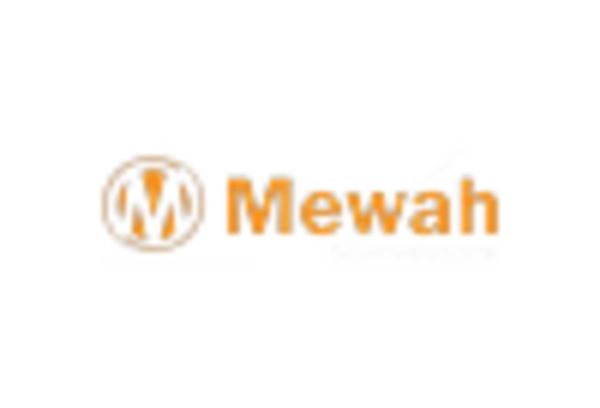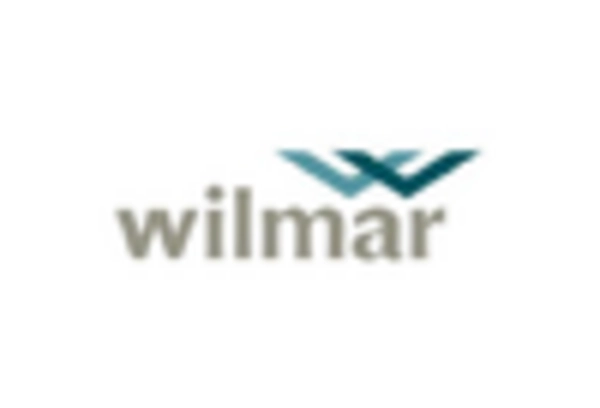Versatility in Food Applications
The versatility of interesterified fats in various food applications is a key driver for the Interesterified Fats Market. These fats can be utilized in a wide range of products, including baked goods, margarine, and confectionery items. Their ability to enhance texture and stability makes them an attractive option for food manufacturers. Recent market analysis indicates that the bakery segment is one of the largest consumers of interesterified fats, accounting for nearly 30% of the total market share. This versatility not only meets consumer demands for quality but also supports the growth of the market as manufacturers seek to innovate and diversify their product offerings.
Regulatory Support for Healthier Fats
Regulatory bodies are increasingly promoting the use of healthier fats, which is positively impacting the Interesterified Fats Market. Governments are implementing policies aimed at reducing trans fats in food products, thereby encouraging manufacturers to adopt interesterified fats as a substitute. This regulatory support is likely to create a conducive environment for the growth of the market. For instance, certain regions have set specific limits on trans fat content in food, which has led to a notable increase in the adoption of interesterified fats. As regulations continue to evolve, the market for these fats is expected to expand further.
Health Benefits of Interesterified Fats
The rising awareness regarding health and nutrition is driving the Interesterified Fats Market. These fats are perceived as healthier alternatives to traditional trans fats and saturated fats, which have been linked to various health issues. As consumers increasingly seek products that support heart health and overall well-being, manufacturers are reformulating their products to include interesterified fats. According to recent data, the market for healthier fats is projected to grow at a compound annual growth rate of approximately 5% over the next five years. This trend indicates a shift towards healthier dietary options, thereby enhancing the demand for interesterified fats in food products.
Consumer Demand for Clean Label Products
The increasing consumer demand for clean label products is significantly influencing the Interesterified Fats Market. As consumers become more discerning about ingredient transparency, they are gravitating towards products that are perceived as natural and minimally processed. Interesterified fats, which can be derived from natural sources, align well with this trend. Market Research Future suggests that nearly 60% of consumers are willing to pay a premium for products that feature clean labels. This shift in consumer preferences is prompting manufacturers to reformulate their products, thereby driving the demand for interesterified fats as a clean label alternative.
Sustainability and Environmental Considerations
Sustainability concerns are increasingly shaping the Interesterified Fats Market. As consumers and manufacturers alike become more aware of environmental issues, there is a growing preference for fats that are produced sustainably. Interesterified fats can be derived from renewable sources, making them a more environmentally friendly option compared to some traditional fats. This shift towards sustainability is reflected in market trends, with a notable increase in the production of interesterified fats from sustainable palm oil and other renewable sources. As sustainability becomes a priority for both consumers and manufacturers, the market for interesterified fats is likely to experience continued growth.


















Leave a Comment